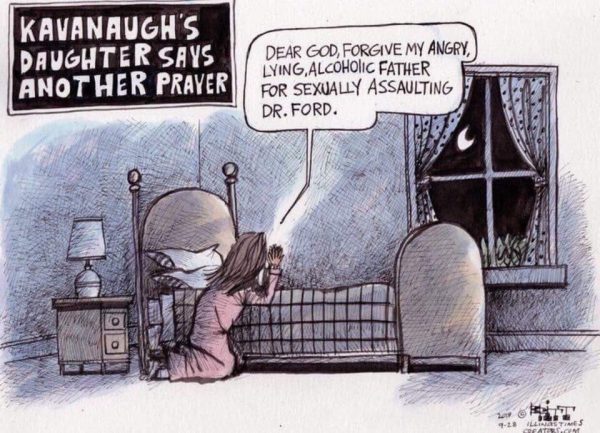Trump delivers a virtuoso performance here (I've clipped the Kavanaugh-related part):
The best part is when the reporter (Kaitlan Collins) pushes Trump to answer the question whether he will pull the nomination if the FBI investigation shows Kavanaugh lied about drinking, and Trump offers a great nonanswer:
The best part is when the reporter (Kaitlan Collins) pushes Trump to answer the question whether he will pull the nomination if the FBI investigation shows Kavanaugh lied about drinking, and Trump offers a great nonanswer:
I don’t think he did. Look, here’s what — I’m just saying, I’m not a drinker. I can honestly say I never had a beer in my life. It's one of my only good traits. I don't drink. Whenever they're looking for something, I’m going to say I’ve never had a glass of alcohol. I have never had alcohol. You know, for whatever reason. Can you imagine if I had, what a mess I would be? I would be the world's worst, but I never drank. I never drank, okay? But I can tell you I watched that hearing, and I watched a man saying that he did have difficulty as a young man with drink. The one question I didn't ask is how about the last 20 years, have you had difficulty the last 20 years? Because nobody said anything bad about him in many, many years. They go back to high school.You've got to watch the whole clip, because it's funny when Trump uses the phrase "You've had enough" to try (playfully) to cut off Collins. She isn't really cut off. She gets loads of time.

















